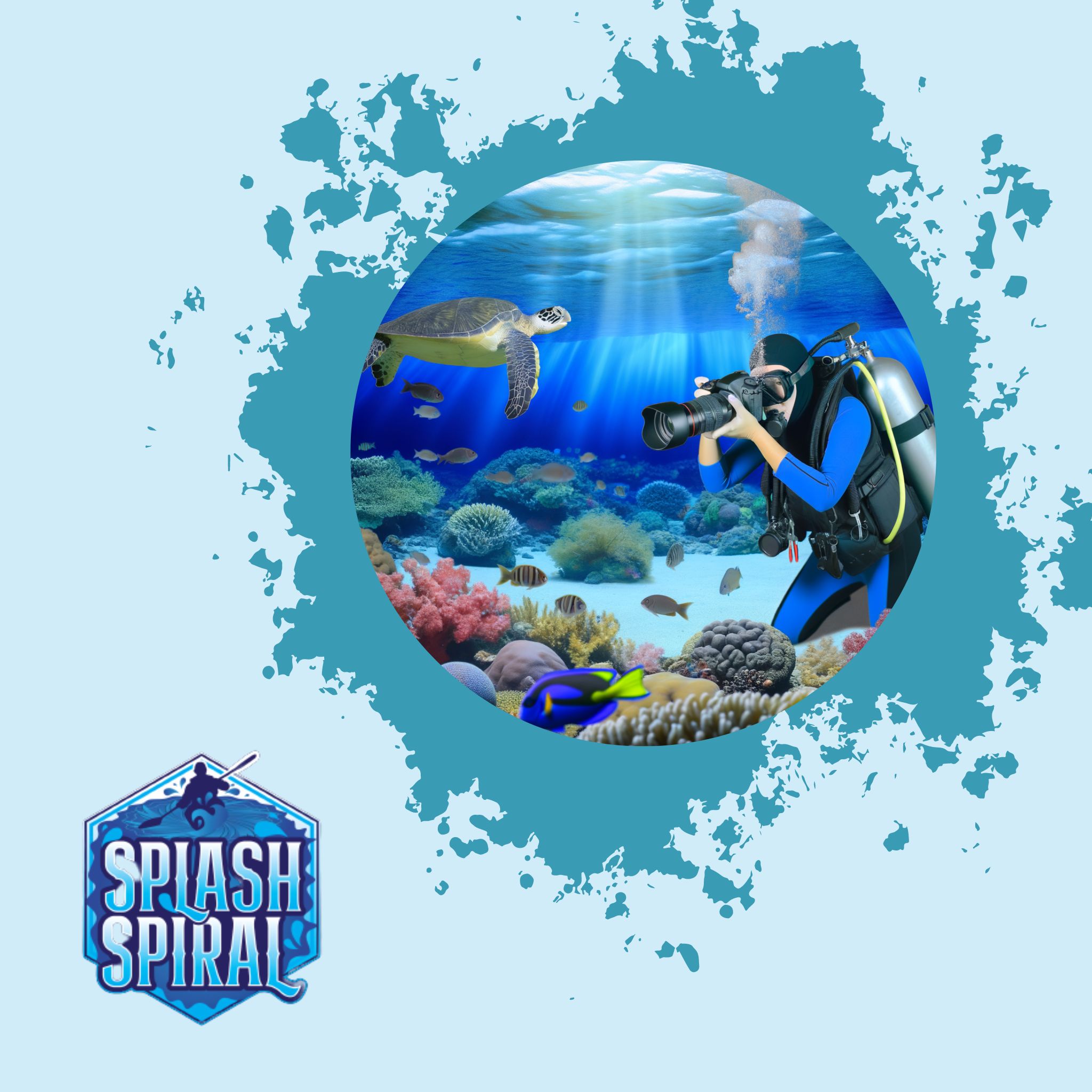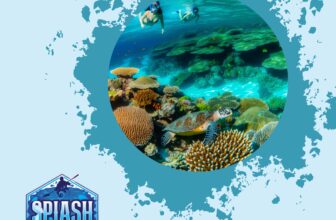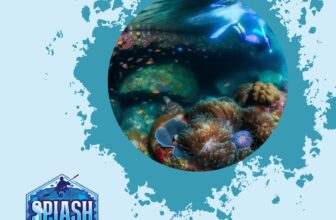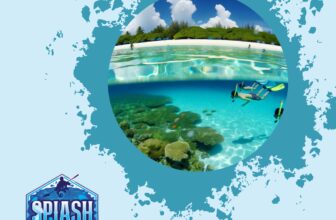
Capturing the beauty of the underwater world requires more than just a good camera and diving skills. One of the key aspects of creating stunning underwater images is mastering composition. For beginner underwater photographers and those looking to start, understanding the basics of composition can significantly elevate your images. Let’s dive into the essential underwater photo composition techniques that can help you transform your underwater photography.
Introduction
Underwater photography can feel like an otherworldly adventure, but mastering it is within your reach. Whether you're just dipping your toes into the ocean of underwater photography or you've already made a few splashes, understanding composition is crucial for capturing mesmerizing photos.
Composition in photography refers to how you arrange the elements in your frame. It's what separates a snapshot from a captivating image that tells a story. This aspect becomes even more vital underwater, where lighting, motion, and the marine environment provide unique opportunities and challenges.
In this article, we’ll cover everything you need to know about composition in underwater photography. From applying the rule of thirds to overcoming lighting issues, and even advanced techniques like utilizing negative space, we'll equip you with the tools to transform your underwater shots from ordinary to extraordinary.
Understanding the Basics of Composition
Rule of Thirds
When starting out in underwater photography, one of the most fundamental techniques you can learn is the rule of thirds. This principle is as simple as it is effective. Imagine your frame divided into nine equal segments by two vertical and two horizontal lines. The idea is to place your subject along these lines or at their intersections. This creates a natural balance and draws the viewer’s eye to the key elements of your photo.
Underwater, this can be incredibly useful. Picture a dazzling fish or intricate coral structure placed off-center, not smack dab in the middle of your shot. This composition makes your image not only more engaging but also more dynamic. For instance, if you're photographing a sea turtle, you could position it on the intersection of the vertical and horizontal lines, while the expansive blue ocean occupies the remaining space, creating a balanced and captivating image.
Leading Lines
Leading lines guide your viewer’s eye through your photo and can add depth and interest to your underwater shots. These lines exist abundantly in the underwater realm: the ridges of a coral formation, the sandy ripple marks on the seabed, or even the lines created by light filtering through the water.
When you spot these natural lines, use them to your advantage. For example, imagine a sunken shipwreck. The lines of the wreck can lead the viewer’s eye toward a central subject, such as a school of fish or an interesting piece of the wreck itself. This not only enhances the focus on your subject but also adds an element of storytelling to your image.
Framing
Framing involves using natural underwater elements to enclose or 'frame' your main subject, adding depth and emphasizing the focal point. Structures such as coral reefs, rock formations, or even the arches in wrecks can serve as great frames.
By placing a subject within these natural frames, you give your image a sense of context and depth, making it more compelling. For instance, you might position a colorful fish within the “window” of a coral formation. This technique not only draws the viewer’s eye directly to the subject but also provides a three-dimensional feel to your photograph, making it pop.
Mastering these basic compositional techniques will set a solid foundation for your underwater photography journey. With a little practice, you’ll find yourself naturally incorporating these principles into your shots, capturing the underwater world in a way that is both aesthetically pleasing and engaging.
Unique Challenges in Underwater Composition
When it comes to underwater photography, unique challenges abound, particularly in terms of composition. Understanding and addressing these challenges can make a substantial difference in the quality of your underwater shots.
Lighting Issues
One of the biggest hurdles underwater photographers face is dealing with lighting issues. The underwater environment often suffers from dim or diffused light, which can obscure your subject and flatten your images.
-
Importance of Natural Lighting:
- Make the most of the natural light available. Typically, the best light can be found within the first 10 to 30 feet below the surface.
- Early morning and late afternoon dives offer softer lighting, which can add drama and richness to your photos.
-
Introduction to Artificial Lighting:
- If natural light isn’t cutting it, investing in artificial lighting equipment like underwater strobes or video lights can greatly enhance your shots.
- Position these lights to eliminate shadows and bring out the textures and colors that get lost in dim conditions.
Motion and Buoyancy
Shaky hands and uncontrolled buoyancy can seriously affect the sharpness and composition of your underwater images. Staying still and maintaining a stable position is necessary to achieve the ideal shot.
-
Controlling Buoyancy:
- Good buoyancy control is essential. Practice neutral buoyancy during your dives to avoid unnecessary movement that can blur your images.
- It also helps you remain at a consistent depth, which is crucial for maintaining the right composition.
-
Using the Environment to Stabilize:
- Don’t hesitate to use natural or man-made structures to steady yourself.
- Holding onto rocks, coral (without damaging them), or the dive line can provide the support needed to compose your shot properly.
Conclusion
Despite the challenges, with these tips and some practice, you can turn these potential obstacles into opportunities to improve your composition and capture stunning underwater photographs.
Advanced Composition Techniques
Once you’ve grasped the basics of underwater composition, it's time to elevate your photography by incorporating some advanced techniques. These methods can add a layer of sophistication to your images, making them stand out even more.
Symmetry and Patterns
Symmetry and repetitive patterns create a sense of harmony in your underwater photographs. The ocean is filled with symmetrical shapes and patterns waiting to be captured:
- Shells and Sea Stars: Notice how some shells spiral and sea stars stretch their arms symmetrically. These natural formations can serve as perfect subjects to exhibit balance.
- Patterns in Coral: Coral formations often grow in intricate patterns. Positioning these patterns in a balanced, symmetrical way can guide the viewer’s eye seamlessly through the image.
Negative Space
Negative space is the area around your subject that remains empty. This can be as powerful as the subject itself, emphasizing and isolating your main focus:
- Simplifying Your Composition: Use the ocean's vast blue backdrop as negative space around marine life. This draws attention straight to the subject, be it a solitary fish or a diver.
- Creating Dramatic Effects: Negative space can also add a dramatic touch. For instance, a small fish against an expanse of water illustrates both the insignificance and beauty of the creature in its environment.
Color Contrast
One of the most striking features of underwater photography is the vibrant colors. Leveraging these colors effectively can make your images pop:
- Using Complementary Colors: Look for natural color contrasts, such as a bright red coral against a green algae-covered rock. Complementary colors (those opposite each other on the color wheel) enhance each other and create a dynamic look.
- Highlighting Subjects: Use contrasting colors to make subjects stand out from their backgrounds. A yellow fish against blue water or a bright red crab on a green seabed instantly grabs attention.
By incorporating symmetry, patterns, negative space, and color contrast into your underwater photography, you’ll be well on your way to creating extraordinary images that captivate and inspire. Remember, the key is to observe and experiment; sometimes, the most stunning compositions are found in the unlikeliest places.
Practical Tips for Better Underwater Photography Composition
Alright, so you’re excited to plunge into the world of underwater photography but want to make sure you nail those shots. Here are some practical tips to get you started on mastering your composition skills underwater:
Pre-Dive Planning
Before you even slip into your wetsuit, a little planning can go a long way. Researching your dive site can provide a mental map of potential photographic opportunities. Are there particular structures or animal species you’re eager to capture? Knowing what to expect helps you pre-visualize your shots.
Key Pre-Dive Considerations:
- Light Source & Marine Life Interaction: Picture where the light will come from and how marine life might interact with their surroundings.
- Subject-Specific Prep: If you’ve got a specific subject in mind, understand its behavior and likely locations.
This preparation sets you up for a successful dive, allowing you to focus more on composition rather than scrambling for a shot.
Practicing with Different Lenses
The lenses you choose can dramatically alter your underwater shots. Wide-angle lenses are fantastic for capturing expansive reef scenes or large marine creatures, while macro lenses excel at detailing the intricacies of small sea life.
Lens-Specific Techniques:
- Wide-Angle Lenses: Benefit from strong foreground subjects to anchor the image.
- Macro Lenses: Thrive on isolated subjects that pop against soft backgrounds.
Experiment with both to see how they influence your compositions. Once you get the hang of your equipment, you’ll start making deliberate compositional choices to complement your lens.
Experimenting with Angles
Think outside the traditional straight-on shots. Shooting from various angles can add depth and interest to your images.
Suggested Angle Variations:
- Upward Shots: Try shooting upwards towards the surface for a dynamic effect with natural light highlighting your subject against the sky.
- Low-Angle Shots: Alternatively, get lower than your subject to give it a majestic and imposing feel.
Variance in angle helps emphasize different textures and layers in your composition, making the most of the three-dimensional underwater space.
By integrating these practical tips into your underwater photography routine, you'll not only capture better photos but also enjoy a smoother and more productive dive experience.
Happy diving, and remember, practice is key! The more you experiment with composition, the more intuitive it will become.
Incorporating Videography into Underwater Photography
While still photography remains a powerful way to capture the underwater world, adding videography to your skill set opens up a whole new dimension. It provides context, movement, and a richer storytelling experience. Here’s why mixing video with your still shots can elevate your underwater photography.
Why Combine Video and Photography?
First off, capturing video can complement your still shots by showing the environment in motion. A still image might freeze a dolphin in mid-leap, but a video captures the complete fluid motion—the grace, the speed, the interaction with its environment. The dynamic elements of video can tell a more comprehensive story about your underwater subjects.
Basic Video Shooting Tips
Starting with video doesn’t have to be complicated. Here are a few easy steps to get you going:
- Steady Wins the Race: Just like with still photography, stability is key. Maintain your buoyancy and move smoothly to avoid shaky footage. Using a tripod or resting your camera on a stable surface can help.
- Short Clips: Aim to shoot shorter clips of around 10-15 seconds. It's easier to manage during the editing process and keeps the viewer engaged.
- Natural Light: Whenever possible, utilize natural light to keep your footage vibrant and true to the environment. Try shooting during midday when the sun is directly overhead and can penetrate the water more effectively.
- Sound Matters: Although underwater sounds may be limited, capturing the swish of water or the sound of your bubbles can add an extra layer to your videos.
Tips Specific to Marine Videography
Transitioning into more advanced techniques, here are some insights specific to marine videography and why they matter:
-
Follow the Same Compositional Rules: Just because you're shooting a video doesn't mean you abandon basic compositional principles like the Rule of Thirds, leading lines, and framing. In fact, these guidelines are just as critical in videography to make your footage visually appealing and engaging.
-
Add Motion Thoughtfully: Motion in your videos can bring your story to life but be intentional about it. Pans, tilts, and zooms should be executed slowly and smoothly to avoid making your footage hard to watch. Practicing these moves will help, so experiment with simple movements before trying anything too complex.
-
Show Progression: A good video tells a story. Capture the beginning, middle, and end of an event or action. For instance, start with a wide shot to set the scene, move in closer for detailed action, and finish with another wide shot to provide closure.
Enhancing Your Still Photos with Video
Remember that video doesn’t just stand alone; it enhances your overall underwater storytelling. Supplement your photos with short video clips, whether you're documenting a dive site, the behavior of marine life, or the vibrant coral reefs. Combining the two formats creates a fuller picture, offering viewers more than just a snapshot but rather an immersive experience.
By incorporating videography into your underwater photography adventures, you’re not just capturing moments—you’re weaving together tales of the deep that can captivate and inspire those who see your work. As you build your skills in both still and moving images, you’ll find new ways to express the beauty and mystery of the underwater world.
Taking Your Underwater Photography Further
Once you've got a handle on the basics and experimented with different techniques, it's time to take your underwater photography to the next level. Here are a few ways to deepen your knowledge and keep improving:
Advanced Learning Resources
For those ready to dive deeper into underwater photography, consider exploring advanced resources and courses. Websites like SplashSpiral offer extensive tutorials, tips from professional photographers, and detailed guides on everything from advanced lighting techniques to post-processing underwater images. Enrolling in a specialized course can provide structured learning and more in-depth knowledge, taking your skills beyond the basics.
Community and Social Media Engagement
Engaging with the underwater photography community is a fantastic way to learn and grow. Join forums, follow underwater photography groups on social media, and participate in discussions. Platforms like Instagram and Facebook have dedicated groups where you can share your work, receive feedback, and gain inspiration from more experienced photographers. Engaging with the community not only helps you improve but also keeps you motivated and inspired.
Participating in Contests and Exhibitions
Entering photography contests, particularly those focused on underwater images, can provide both challenges and accolades that elevate your craft. Look for local and international competitions where you can submit your photos. These contests often provide feedback from expert judges, which can offer new perspectives on your work. Additionally, exhibiting your photos in galleries or online exhibitions can open up opportunities for recognition and networking.
Keeping Up with New Techniques and Gear
Underwater photography is a continually evolving field with advancements in technology and techniques. Staying updated with the latest gear, such as new camera models, lenses, and underwater housing, can significantly impact your photography. Reading photography blogs, attending workshops, or subscribing to relevant magazines can help you keep pace with the latest trends and equipment.
Practice and Patience
Lastly, the key to mastering underwater photography is practice and patience. Continuously experimenting with different settings, compositions, and environments helps you develop your unique style. Challenges are a part of the process, so embrace them as learning opportunities. The underwater world is vast and ever-changing, providing infinite possibilities for stunning photographs.
By exploring these advanced resources and engaging with the community, you can significantly enhance your underwater photography skills and share the breathtaking beauty of the ocean with the world.
Conclusion
Mastering composition in underwater photography may seem daunting, but with practice and a keen eye, it's an achievable goal that will significantly enhance your photographic results. By applying the basics such as the rule of thirds, leading lines, and framing, you can craft balanced and compelling images. Recognizing and overcoming unique underwater challenges like lighting and buoyancy will further polish your skills.
As you progress, experimenting with advanced techniques like symmetry, negative space, and color contrast can add new dimensions to your work. Remember, planning your shoots, practicing with different lenses, and trying various angles can provide fresh perspectives and invigorate your underwater portfolio.
Integrating videography into your routine offers another exciting avenue to explore, where you can merge storytelling with motion. Utilize the same principles of composition to elevate your video footage alongside your photos.
To truly excel, engage with the wider underwater photography community and take advantage of advanced resources and courses available to you. Platforms like SplashSpiral can offer invaluable guidance and inspiration.
So, grab your camera, dive in, and start experimenting. The underwater world is your canvas—compose it beautifully and let the splendor of the deep sea shine through your lens.







